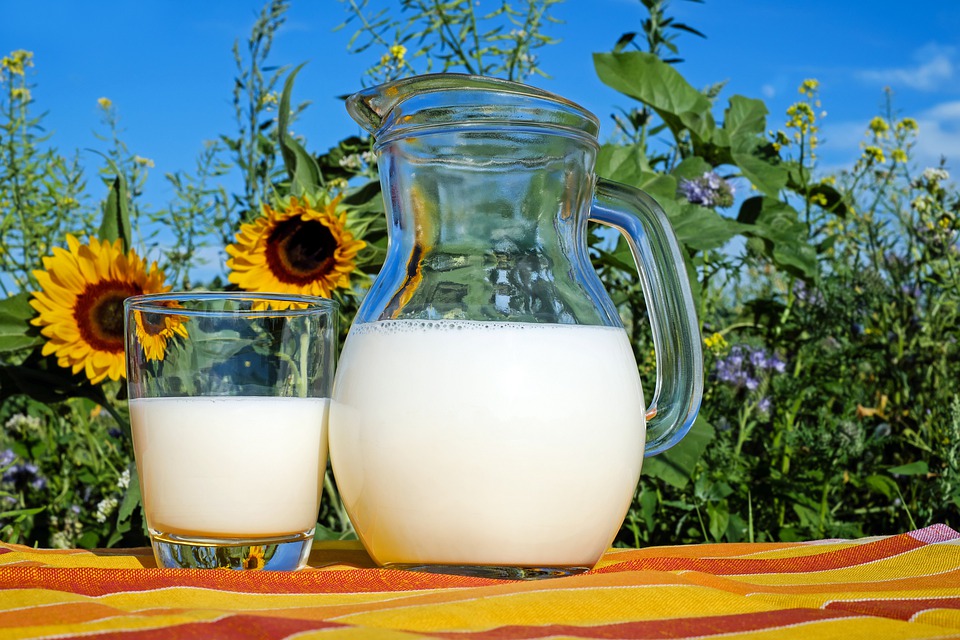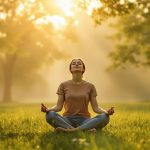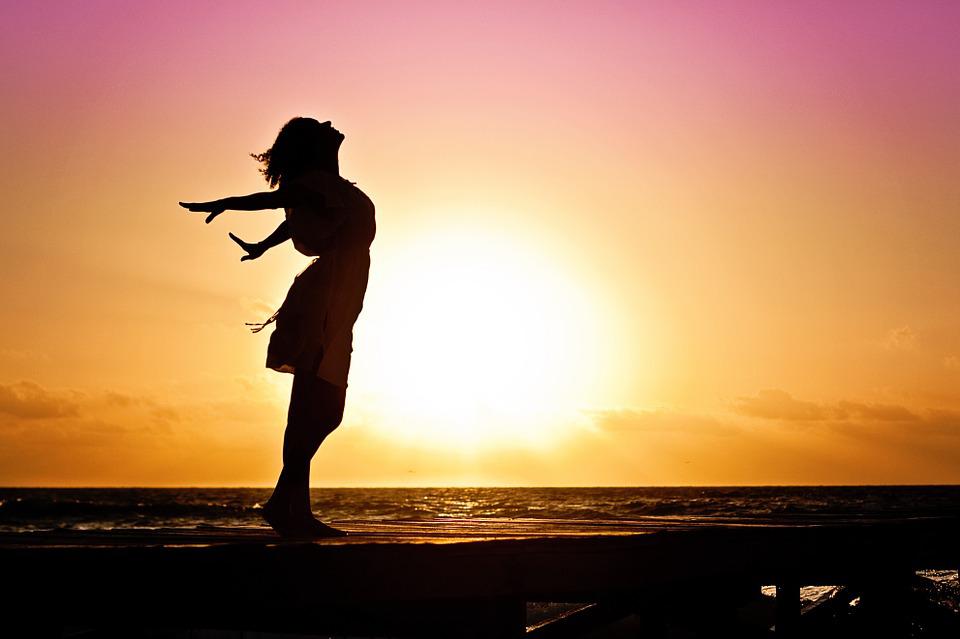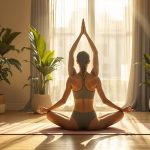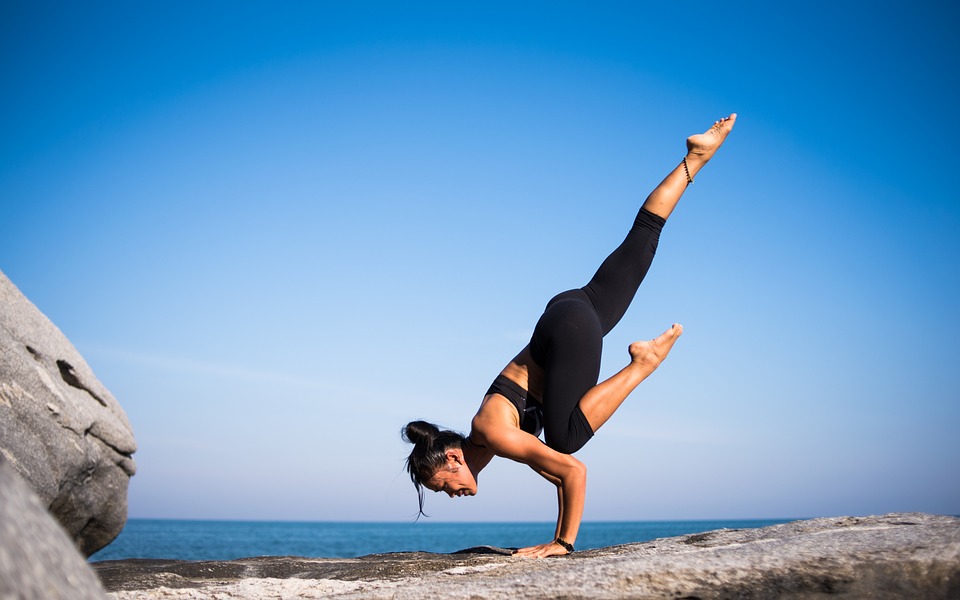
What Is Yoga?
“Plain and simple, yoga is the union between the body, mind, and spirit. That’s the origins of yoga and that’s how it is practiced in the East,” says Miriam Amselem, a yogi of nearly 30 years. “It is a place of discovery and connection with your own body that encompasses balance, proper stretching techniques, breathing, meditation, centering the mind and spirit — that’s yoga in its real form.”
However, you’ll find that every type of yoga has a slightly different definition or interpretation. That is why we see things like goat yoga (a.k.a. doing yoga with goats running and jumping around) popping up alongside traditional forms like Iyengar and Ashtanga.
But above all, yoga ignores the “no pain, no gain” philosophy that’s rife in fitness communities. Yoga is not a place to push through, go beyond your edge, or ignore your body. The primary tenet is ahimsa or non-harming, and that starts with choosing the right type of yoga for you.
Yoga Styles 101: The 3 Main Types of Yoga and Their Effects on the Autonomic Nervous System
There are uncountable yoga styles these days. All of these styles, however, can be likened to one of the three yoga styles discussed in detail below:
- Hatha
- Vinyasa
- Yin
When discussing these three main types of yoga, we mainly distinguish them on the basis of their activity level. And, therefore, their influence on our autonomic nervous system (ANS).
Our ANS governs all involuntary systems of the body (like blood circulation, digestion, hormonal balance, and immune system). It consists of two sub-systems:
- The sympathetic nervous system (SNS), prepares the body for action and stress (“fight-or-flight”)
- The parasympathetic nervous system (PNS), regulates all regular functions for the growth and healing of the body (“rest-and-regenerate”)
Most yoga styles primarily stimulate either the “rest-and-regenerate” response (PNS) or the “fight-or-flight” response (SNS). Some types of yoga equally stimulate both of these departments of our autonomic nervous system.
Here’s a more detailed look at these three main types of yoga and their effects.
The Main Benefits of Hatha Yoga:
Hatha Yoga is the oldest style of these three and is often considered to lie at the foundation of all existing yoga styles today. It is a practice to purify and control the physical body. And as a result of these practices, you also begin to gain control over the mind.
The Hatha Yoga Pradipika, compiled by Swami Svatmarama in the 15th century AD, stresses the importance of asana practice in order to increase bodily health. Swami Svatmarama also talks about how we influence the solar (yang) and lunar (yin) energies in the body in Hatha Yoga, balancing them for increased health and spiritual development.
Hatha Yoga offers many different benefits:
1. Rebalances Our Autonomic Nervous System
Our nervous system needs both states of activation, the “fight-or-flight” (sympathetic nervous system) as well as the “rest-and-regenerate” (parasympathetic nervous system).
An out-of-balance nervous system is very common in our modern society. Some of us spend most of the time in the excited SNS state, while others are “trapped” in the listless, depressed PNS state.
An out-of-balance nervous system is very common in our modern society.
During a Hatha Yoga practice, we go through a cycle of exercises and postures that accelerate the nervous system and then brake the nervous system again, giving it a thorough workout.
Through alternating challenging asanas with relaxation postures such as Savasana (Corpse Pose), we teach our bodies to easily shift from one state of the nervous system to the other. This results in more inner balance and harmony and improved overall health.
2. Keeps the Spine Young
“You are as young as your spine is flexible” is a common statement in the yoga world. And medical studies are starting to confirm this old wisdom.
In Hatha Yoga, we put great emphasis on moving the spine in a variety of directions. The movement between forward bends and backbends, twists, and lateral stretches massages the intervertebral discs and increases their capacity to absorb nutrients from surrounding tissues.
As a result, long-term practitioners of Hatha Yoga in a study in Taiwan have been found to have significantly healthier and less-degenerated discs than the control group.
3. Increases Overall Stamina and Strength
A traditional Hatha Yoga practice is challenging. It moves your boundaries in terms of stamina, strength, flexibility, and coordination.
In Hatha Yoga, even though there are relaxation postures at regular intervals (which might make it look easy), Sun Salutations, strength-building exercises, inversions, and arm balances create great variety in the practice to increase overall stamina and strength.
The Main Benefits of Vinyasa Yoga:
The dynamic and often rather vigorous practices of today have origins in the legendary teacher of teachers: Sri Krishnamacharya. He was the teacher of K. Pattabhi Jois, who became a legend in the mid-1970s with the Ashtanga Vinyasa Series.
The Ashtanga Primary Series, in turn, became the blueprint for many Vinyasa and Power Yoga classes. Where the Ashtanga Primary Series is fixed like choreography, there is much more freedom in Vinyasa Flow.
A common element of Vinyasa Yoga is that we aim to move from one posture into another with fluid transitions.
Vinyasa Yoga also has many benefits:
1. Improves Stamina by Providing a Cardiovascular Workout
Generally, during a Vinyasa Flow practice, we are in a sympathetic nervous system (SNS) activated state.
As we use our muscles, our breathing and heart rate increase and we train our stamina and cardiovascular system. During Vinyasa, we typically keep a constant and moderate stress on our heart and respiratory system.
There is much more freedom in Vinyasa Flow.
There might be some short phases to catch our breath, but most of the time we keep moving (with our heart rate and breathing rate above resting level).
Therefore, the regular practice of dynamic yoga styles such as Vinyasa will increase your capacity to sustain prolonged physical and mental effort. This basically comes down to increasing your fitness level.
2. Increases Strength in Your Limbs and Core
The active and dynamic nature of a Vinyasa Yoga practice will tone your legs, arms, and core. This is a widely-acclaimed benefit of these more dynamic types of yoga, as they usually include a great variety of Lunges, Warrior Poses, and Chaturanga Dandasanas (yogic push-ups).
The increased core strength can also help to improve your posture and overall body control.
3. Boosts Metabolism
Through the increased muscle tone (as in any conventional exercise), Vinyasa Yoga tends to increase the metabolism of the practitioner, which can result in weight loss.
The Main Benefits of Yin Yoga:
Yin Yoga is a fairly new style of yoga, founded by Paulie Zink in the 1980s. It is a style that focuses on the Yin aspect of Taoism. This style emphasizes more gentle, calming, and supported postures, and they are held for an extended period of time (usually around three to five minutes).
The goal is to gently stress the connective tissues in the targeted areas. Unlike Restorative Yoga, Yin Yoga is not necessarily easy.
Yin Yoga also offers many benefits:
1. Increases Flexibility by Releasing Fascia
Deep fascia consists of dense fibrous connective tissue. It surrounds all components of the body: muscles, tendons, ligaments, cartilage, bones, nerves, and blood vessels. There is also fascia that suspends the organs within their cavities and wraps them in layers of connective tissue, which is called visceral fascia.
Yin Yoga stimulates and releases these fasciae and we benefit from a therapeutic effect called myofascial release. Long-stored tensions are released, scar tissue is broken down and released, and muscles learn to relax into their natural state again.
This leads to improved posture, reductions of chronically recurring injuries, and improved joint mobility.
2. Activates the Parasympathetic Nervous System
When our breathing is calm, our muscles relaxed, our heartbeat at a leisurely pace and our mind stable, our nervous system enters into its “rest-and-regenerate” mode (aka PNS activation).
In this state of the nervous system, the body has time and energy to repair and heal itself, to digest and eliminate properly, and to make sure all systems are in good balance. To be in this state regularly and for prolonged durations is incredibly important to ensure lasting health.
In Yin Yoga, most postures are held steadily for around five minutes.
During the long holds in Yin Yoga, our heartbeat is slower and we focus on our breath. This calms our minds. We enter a state of PNS activation and allow our body and mind to rest, rejuvenate, and heal.
3. Increases Our Capacity to Deal With Discomfort
In Yin Yoga, most postures are held steadily for around five minutes. What initially feels easy, becomes much more difficult after one or two minutes of hold.
When practicing Yin Yoga, we follow two important principles:
- Do not hold the pose at more than 80% of your capacity. So enter the pose to the fullest and then back out at least 20% and support your body with a block, bolster, or cushion in order to stay in a “Yin zone”
- Do experience discomfort, but no “red” pain. Yin Yoga is not lazy or restorative, even though it is very slow and uses a lot of support. The idea is to place stress on our tissues in order to stimulate and rebalance them. Therefore, during a Yin Yoga class, you will be confronted with discomfort and you will learn to endure it, using your breath and mental focus
More Types of Yoga to Choose the Right Kind for You
Kundalini Yoga
Yogi Bhajan, a teacher and spiritual leader, brought this style of yoga to the West in the late 1960s. “Kundalini” in Sanskrit translates to “life force energy” (known as prana or chi in the yoga community), which is thought to be tightly coiled at the base of the spine. These yoga sequences are carefully designed to stimulate or unlock this energy and to reduce stress and negative thinking. “You get to elevate your consciousness and feel great,” says Veronica Parker, an E-RYT 200, and a certified kundalini yoga teacher.
This is accomplished by challenging both mind and body with chanting, singing, meditation, and kriyas (specific series of poses paired with breath work and chanting). You might notice everyone is wearing white, as it’s believed to deflect negativity and increase your aura. Typically, a kundalini class starts with a mantra (a focus for the class), then includes breathing exercises, warmups to get the body moving, increasingly more challenging poses, and a final relaxation and meditation, says Parker.
Who Might Like It: Anyone in search of a physical, yet also a spiritual practice, or those who like singing or chanting.
Ashtanga Yoga
Ashtanga yoga consists of six series of specific poses taught in order. Each pose and each series is “given” to a student when their teacher decides they have mastered the previous one. This is a very physical, flow-style yoga with spiritual components — you might remember it as the type Madonna did in the late ’90s. Ashtanga teachers give hands-on adjustments, and in Mysore-style studios (named after the city where the practice’s guru, Sri K. Pattabhi Jois, lived and taught), each student has a unique practice.
“The practitioner moves at the pace of her own breath and to her personal edge, or growth point,” says Lara Land, a level two authorized Ashtanga teacher. “Each person memorizes the practice and moves at her own pace through the poses.”
Ashtanga vinyasa yoga is often taught as “led” classes in the West, where the first or second series is taught from start to finish over the course of 90 minutes to two hours. There is no music played in Ashtanga classes.
Who Might Like It: Anyone who likes routine or more physical yet spiritual practice.
Iyengar Yoga
Named for its founder, B.K.S. Iyengar, who developed his classical, alignment-based practice in India. This type of yoga became popular in the US in the 1970s. Iyengar yoga is known for the high level of training required of its teachers and for its resourceful use of props. While considered optional in many practices, multiple props are used in Iyengar classes — including chairs, walls, and benches, in addition to more common ones like straps, blocks, and bolsters.
Paul Keoni Chun, an E-RYT 200, likes this more static form of yoga for older adults since it “emphasizes detailed alignment and longer holds of positions.” Iyengar yoga is usually less intense than other types of yoga, although that can vary based on the instructor or class. But generally, it’s suitable for people of all ages and skill levels.
Who Might Like It: Someone who likes detailed instruction, anyone with physical limitations, or those in search of a more classical form of yoga.
Bikram Yoga
Bikram Choudhury developed Bikram yoga. It is a form of hot yoga. These classes, like Ashtanga classes, consist of a set series of poses performed in the same order, and the practice has strict rules. Each class is 90 minutes, with 26 postures and two breathing exercises, and the room must be 105° Fahrenheit with 40 percent humidity. Additionally, instructors do not adjust students.
Since Bikram yoga has so many rules, many studios simply call their classes “hot yoga” so they can customize their offerings. Devotees of hot yoga tout the massive amount of sweat and the added flexibility the practice gives them.
“Practicing yoga in a heated environment allows students to get deeper into postures, improves circulation, and aids in detoxifying the body,” says Natalie Sleik, RYT 200, who teaches hot power yoga.
Who Might Like It: Anyone who likes to sweat, someone who wants more physical practice, or those who like routine.

